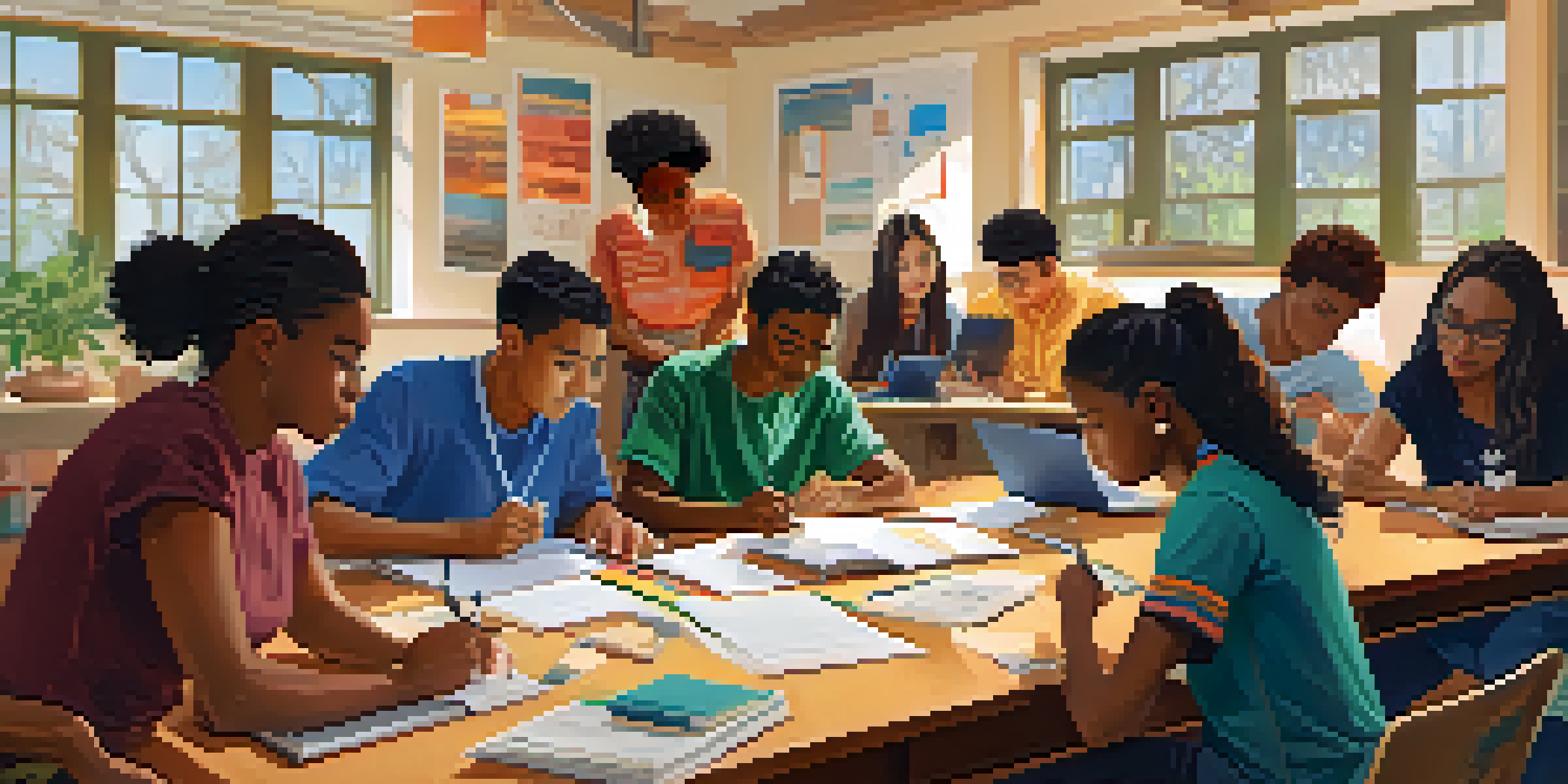Collaborative Learning: A Self-Directed Approach

What is Collaborative Learning and Why It Matters
Collaborative learning is an educational approach where individuals work together to achieve shared goals. It's not just about studying in groups; it's about leveraging each other's strengths and perspectives. This method fosters a sense of community and encourages active participation, making learning more engaging and effective.
Alone we can do so little; together we can do so much.
When learners collaborate, they develop critical skills such as communication, problem-solving, and conflict resolution. These skills are essential not only in academic settings but also in the workplace and everyday life. It's like being part of a sports team, where each player has a unique role that contributes to the overall success.
Moreover, collaborative learning encourages self-directed learning. Students take ownership of their learning process, seeking out resources, asking questions, and exploring topics that pique their interest. This self-directed approach cultivates a lifelong love for learning and adaptability in an ever-changing world.
The Role of Self-Direction in Collaborative Learning
Self-direction in learning means that individuals take the initiative to set their learning goals, decide on their resources, and evaluate their progress. In a collaborative setting, this approach empowers learners to become active participants rather than passive recipients of information. It's like being the captain of your own ship, navigating through the vast ocean of knowledge.

When learners are self-directed, they tend to engage more deeply with the material and with their peers. They are more likely to ask questions, share insights, and challenge each other's viewpoints. This dynamic interchange not only enriches the learning experience but also builds a supportive community where everyone feels valued.
Collaborative Learning Boosts Skills
Working together enhances critical skills like communication and problem-solving, essential for both academic and real-world success.
Additionally, self-directed learners often take the lead in group projects, helping to organize tasks and ensuring that everyone contributes. This leadership role reinforces their confidence and hones their ability to work collaboratively, preparing them for future challenges in both academic and professional realms.
Benefits of a Self-Directed Collaborative Learning Approach
One of the standout benefits of this approach is increased engagement. When students feel they have a say in their learning, their motivation skyrockets. Imagine working on a project with friends where everyone is excited about their roles—this enthusiasm translates into better retention of information and a deeper understanding of the subject matter.
None of us is as smart as all of us.
Moreover, collaborative learning promotes diverse perspectives. Each participant brings their unique experiences and viewpoints to the table, enriching discussions and problem-solving processes. This diversity helps learners develop empathy and cultural awareness, essential skills in our increasingly globalized world.
Finally, this approach fosters resilience. Working in groups inevitably leads to challenges, whether it's differing opinions or workload imbalances. Navigating these obstacles teaches learners how to adapt, communicate effectively, and find solutions as a team—skills that are invaluable in all areas of life.
Strategies for Implementing Collaborative Learning
To effectively implement collaborative learning, it's essential to establish clear objectives. Setting specific goals helps guide the group’s efforts and ensures that everyone is on the same page. Think of it as creating a roadmap for a road trip—without a destination, you may end up lost!
Another strategy is to create a safe and inclusive environment. Encourage open communication and mutual respect among group members. When learners feel safe to express their thoughts and ideas, they are more likely to contribute actively and take risks in their learning.
Self-Direction Enhances Engagement
When learners take initiative in their education, they become more engaged and motivated, leading to a deeper understanding of the material.
Lastly, utilize technology to enhance collaboration. Tools like video conferencing, shared documents, and discussion forums can facilitate communication and project management, especially in remote learning environments. This tech-savvy approach not only keeps the group connected but also mirrors the collaborative practices found in many modern workplaces.
Challenges of Collaborative Learning and How to Overcome Them
Despite its benefits, collaborative learning can present challenges. One common issue is unequal participation, where some members dominate discussions while others remain silent. To overcome this, it's essential to establish ground rules that promote equal contribution, such as rotating roles within the group.
Another challenge is managing conflicts that may arise from differing opinions or work styles. It's crucial to address these conflicts constructively by encouraging open dialogue and active listening. Remind group members that diversity of thought is a strength, and resolving differences can lead to innovative solutions.
Lastly, time management can be tricky in collaborative settings. Groups may struggle to coordinate schedules or keep on track with deadlines. To combat this, setting clear timelines and regular check-ins can help ensure that everyone stays accountable and progress is made consistently.
Real-World Applications of Collaborative Learning
Collaborative learning is not just confined to classrooms; it has real-world applications across various fields. In the workplace, for example, teams often work together on projects, drawing on each other's expertise to achieve common goals. This mirrors the collaborative approach seen in academic settings, where diverse skills lead to greater innovation.
In healthcare, collaborative learning plays a vital role in training professionals. Medical students often engage in team-based learning, where they work together to diagnose cases and develop treatment plans. This not only enhances their clinical skills but also prepares them for real-life scenarios where teamwork is crucial for patient care.
Diverse Perspectives Foster Innovation
Collaborative learning brings together varied experiences and viewpoints, enriching discussions and promoting empathy in a globalized world.
Moreover, community organizations often utilize collaborative learning to address local issues. By bringing together individuals with different backgrounds and skills, they can brainstorm solutions and implement projects that benefit everyone. This community-based approach fosters a sense of belonging and empowers individuals to effect change.
Tips for Enhancing Collaborative Learning Experiences
To enhance collaborative learning experiences, start by encouraging reflection. Have learners assess their contributions, what they learned from others, and how they can improve in future collaborations. This reflection process helps solidify learning and encourages personal growth.
Next, celebrate successes, no matter how small. Recognizing achievements fosters motivation and reinforces the value of teamwork. Whether it’s completing a project or simply having a productive discussion, taking the time to acknowledge efforts can boost morale and encourage continued collaboration.

Finally, be adaptable. Each group is unique, and what works for one may not work for another. Being open to adjusting strategies based on group dynamics and feedback can lead to more effective and enjoyable collaborative learning experiences.